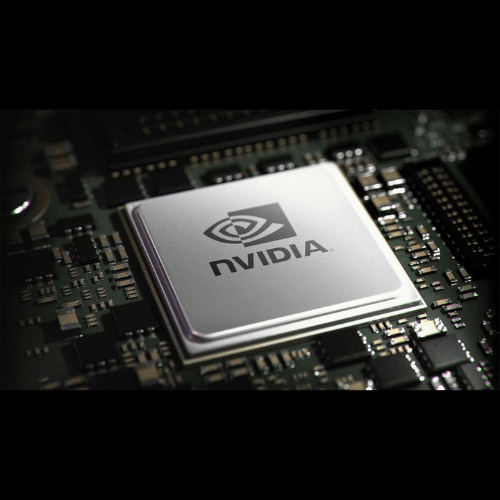Nvidia (NVDA) currently leads the AI chip market, commanding an estimated 70-80% share of the rapidly expanding sector. As demand for advanced AI solutions grows, several key players are investing heavily in an attempt to challenge Nvidia’s dominance. Among these competitors, AMD (AMD), Intel (INTC), and custom in-house solutions from tech giants like Google (GOOGL), Microsoft (MSFT), and Amazon (AMZN) show the most potential to capture significant AI market share by leveraging innovations in architecture, open ecosystems, and high-efficiency hardware.
AMD: Leveraging Open Ecosystems and Expanding AI Capabilities
Advanced Micro Devices (AMD) has emerged as a strong contender with its recent advances in both CPU and GPU technologies. The company recently introduced the Instinct MI325X GPU and upcoming MI350, which directly compete with Nvidia’s AI-focused GPUs. These chips are designed for handling intensive AI and machine learning tasks, and AMD’s fifth-generation Epyc processors have gained traction in data centers due to their enhanced performance and efficiency. AMD has focused on supporting an open software ecosystem, a move aimed at appealing to companies who want more flexibility and less dependency on proprietary platforms—a clear contrast to Nvidia’s more closed ecosystem (WinBuzzer, Visual Capitalist).
In addition to data centers, AMD is targeting the PC market with AI-ready CPUs like the Ryzen PRO 8000 series, which are set to power business laptops and desktops. By collaborating with OEMs like Lenovo and HP, AMD is tapping into consumer demand for on-device AI capabilities. While Nvidia remains the leader in GPUs for high-end AI workloads, AMD’s progress in diverse markets and its commitment to open, flexible AI development could capture a growing share of enterprise and consumer markets over time (Investopedia).
Intel: Targeting Economical and Edge AI with Gaudi 3
While Intel has not yet matched Nvidia in high-performance GPUs for AI, it’s taking a different approach with its Gaudi 3 AI accelerators. Positioned as a cost-effective alternative, Gaudi 3 chips are tailored for enterprises looking to run task-specific AI models and smaller-scale machine learning operations rather than massive, general-purpose models. Intel’s strategy leverages its strengths in enterprise relationships and open-source solutions, making Gaudi 3 a viable choice for companies that prioritize cost-effectiveness and control over their AI infrastructure (CRN).
Intel’s vision also includes expanding into edge computing and maintaining open hardware and software standards, allowing businesses to integrate AI capabilities without vendor lock-in. While Gaudi 3 is unlikely to directly compete with Nvidia’s high-end GPUs, it fills a niche for enterprises that need more affordable AI solutions. Intel’s approach aligns well with industries like manufacturing and logistics, where specialized AI models are used on-site for tasks like predictive maintenance and process optimization.
Tech Giants: In-House AI Chips for Custom Solutions
Major tech companies including Google, Microsoft, and Amazon have developed in-house AI chips to meet their own needs, reducing reliance on third-party vendors. Google’s Tensor Processing Units (TPUs), for instance, support a wide range of AI applications within Google Cloud and are optimized for specific tasks, like natural language processing and large-scale data analysis. Amazon and Microsoft are also deploying custom chips in their cloud services to cater to their AI-powered platforms, like AWS and Azure, making AI more accessible to enterprise customers who prefer cloud-based infrastructure over on-premises hardware.
This custom-chip strategy enables these tech giants to compete indirectly with Nvidia by creating optimized, in-house hardware solutions for cloud customers, which could shift some demand away from Nvidia’s GPUs. For businesses heavily invested in these cloud ecosystems, using Amazon’s or Google’s native AI chips often reduces costs and simplifies integration (Investopedia).
Challenges and Potential Future Shifts
Although Nvidia’s high-end AI hardware continues to dominate due to unmatched performance in large-scale machine learning, competitors are making meaningful inroads in cost-sensitive markets and specialized applications. AMD and Intel’s commitment to open systems offers an alternative for companies that prefer flexibility, while custom solutions from tech giants could capture a significant segment of the market focused on cloud-based AI applications. As demand for AI continues to diversify, these companies have the potential to carve out a greater share of the market.
In summary, while Nvidia currently leads, the combined efforts of AMD, Intel, and tech giants investing in proprietary solutions represent a robust and growing competition. This diversification may create meaningful alternatives for businesses looking for specific AI capabilities, from cost-effective edge solutions to high-performance data center applications.
by Steve Macalbry
Senior Editor,
BestGrowthStocks.Com
Disclaimer: The author of this article is not a licensed financial advisor. This article is intended for informational purposes only. It should not be considered financial or investment advice. We have not been compensated for the creation or distribution of this article and we do not hold any form of equity in the securities mentioned in this article. Always consult with a certified financial professional before making any financial decisions. Growth stocks carry a high degree of risk, and you could lose your entire investment.






